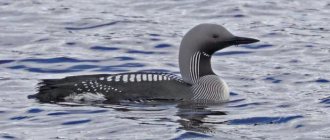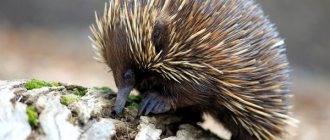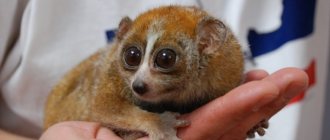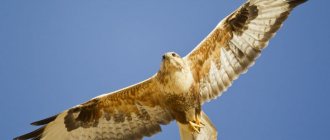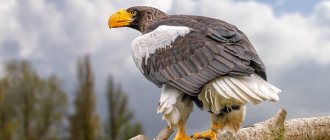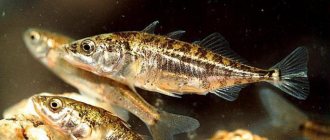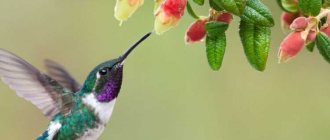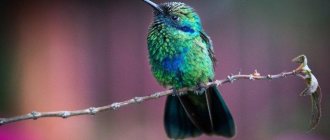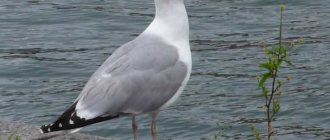Description of the species
The common noctule (Nyctalus noctula) is no different from other bat species. But knowing its external morphology, you can easily distinguish this representative from other species.
The color of the fur of the red noctule and the length of its body are slightly different from other bats. From head to tail it reaches 8 cm, which is a serious indicator for these animals. The tail itself has a length of 4 to 5 cm. The color of the fur is red, which is reflected in the name of the species. The weight of one animal can reach from 18 to 40 g.
It is easy to recognize the rufous noctule when flying, because one of its identifying features is its wings. They have an oblong, narrowed shape, pointed at the ends. Such wings give the mouse light, but at the same time strong flight. The animal quickly makes instant turns and, if necessary, quickly rushes down.
On the head of the red noctule there are 2 short ears that barely rise above the fur. They are thick, collected in the form of folds and located from each other at a distance equal to the width of the head.
Description of the animal
The rufous noctule, from the Latin Nyctalus noctula, is a species of bat with a large habitat. The small animal lives in groups and is of unique value to the ecosystem.
What does it look like
The bat is a classic representative of bats. The mammal has a small, hairy body, leathery wings and prehensile legs.
Appearance Features:
- coloring - the coat is golden brown or reddish in color, lighter on the belly;
- body size – from 6.1 to 8 cm;
- tail length – from 4.6 to 5.4 cm;
- average weight – up to 40 g;
- the wings are narrow, long, pointed at the ends;
- shortened muzzle;
- the ears, unlike the brown long-eared bat, are short, wide, thick - reminiscent of folds;
- the ears are located at a distance from the head.
Due to the unique structure of the wings, the bat is distinguished by enviable maneuverability and is well recognized from a long distance by its flight pattern.
Character and lifestyle
Like relatives of other species of bats, the noctule is active at night and hides in natural or artificial shelters during the day. With the expansion of cities, bats began to take up residence in attics and ventilation shafts. The latter often ends in death.
Evening bats live in large groups of 35 to 100 individuals, depending on the season. Before flying out to hunt, the animals make a noise, but fly out only in small groups, spreading out over the territory.
- Departure duration – 40 minutes;
- flight altitude – 70 meters above the ground;
- distance from the nest – no more than 10 km;
- the hunt takes place in 2 trips - in the evening and before dawn, between them the animal rests in a shelter;
- the beetles become food immediately after being caught, in flight.
When hunting, noctules rely on echolocation and determine the movement of insects from a long distance.
Unfortunately, researchers and poachers also use devices or previously captured representatives of noctule moths to catch them. Relatives flock to the sound of a squeak and can fall into the hands of an unscrupulous person.
What does it eat?
Contrary to popular misconception, the victims of bats are mostly exclusively large insects, and their tiny and neat teeth are not able to even scratch human skin. Noctules are completely harmless and provide a great service to the environment by reducing the number of insects.
The diet of the rufous noctule includes:
- Khrushchi;
- mole crickets;
- ground beetles;
- swimming beetles;
- flies and butterflies;
- bronzes and barbels;
- blood-sucking insects.
During hunting, bats significantly reduce the number of parasitic insects.
Where does it live?
The rufous noctule has a large habitat, including the territory of: Europe, South-Western Siberia, Central Asia, East Asia, Southeast Asia, China, Kazakhstan, Belarus, Ukraine, the Middle East, Africa.
Deforestation of mixed and deciduous forests contributed to the movement of bats into the urban outskirts and suburban areas.
Since the 70s of the last century, it was noticed that the rufous noctule moves not only on the edges of cities, but is also found in parts close to the center. Thus, the animal can be found in Ostankino, the village of Sokol or Sokolnik, Losiny Island and other areas of Moscow.
Under natural conditions, the noctule prefers to live in mosaic-type territories with forests, clearings and rivers, often choosing adits or natural caves for shelter. Also suitable for a colony house:
- internal edges;
- parks;
- dachas;
- utility buildings;
- attics of houses;
- hollow
Nests can be easily identified by their specific smell and excrement residues near the entrance. Feces also attract a large number of flies.
Reproduction
Rufous noctules develop quickly and become fully formed adults in one season.
Features of reproduction and care of offspring:
- male noctule moths do not build separate nests;
- in the first months of spring, males fly to nests with a large number of mature females and attract them with song;
- sexually mature age of males – from 2 years, females – from 2.5 years;
- gestation period - 2.5 months;
- bats are viviparous animals;
- the cubs are born completely helpless, the number of young animals is up to 2 individuals;
- until the 20th day of life, little noctules remain in the colony, then they learn to hunt with their mother;
- males do not take part in caring for the offspring.
Places of distribution
The rufous noctule is an animal that feels at ease in Ukrainian forests and forest-steppes. But the animal spends the main part of its life in the forest, and enters the steppe zone only for a short time, during seasonal migrations (autumn and spring). It is found in Russia, Ukraine, Belarus, various regions of Central Asia, China and African countries.
In winter, the forests of Russia and Ukraine are very poor (in gastronomic terms) for the bat. Therefore, the animal leaves its “home” and goes on a journey until spring. Wintering of the noctule takes place in warm countries: Bulgaria, Greece.
The animal makes its migration at the end of August. But its duration takes a long time, so individual representatives of this species can be spotted in the Ukrainian steppes even in the first winter month.
Those representatives of the rufous noctule that did not manage to fly south in time gather with other similar individuals in flocks in the Transcarpathian region and fall into a long hibernation until March - early April.
With the onset of spring warmth, the habitats of the rufous noctule are again filled with these animals. For living, they prefer deciduous and mixed forests or old parks full of hollow trees.
Also, places where mice accumulate are attics of houses and abandoned rooms, where they, uniting in flocks, wait for night to fall.
Red Evening in the Red Book
The disappearance of a large number of individuals of the red noctule due to rapid urbanization led to the inclusion of the animal in the list of protected animals in the Moscow, Smolensk, Leningrad, Pskov, Voronezh and other regions.
The conservation status of an animal can vary from 2 to 4 depending on the situation in a particular region.
Main causes of extinction
In addition to natural enemies, which significantly reduce the number of animals, animal populations face a number of dangerous obstacles leading to extinction.
Reasons for reducing the number of individuals:
- increased housing density;
- deforestation;
- sanitary treatment of the territory from blood-sucking insects (reduction of the food supply);
- industrial pollution of water bodies and air;
- lack of a buffer strip between forests and cities;
- degradation of glades;
- reduction in the number of old trees with large hollows.
Also, an important reason for the deterioration of the population is considered to be increased noise levels near cities. Noise disrupts the natural process of echolocation that an animal uses to move through space. When flying, the mouse relies on the phenomenal capabilities of voice and hearing.
Current population situation
Currently, the number of small mammals is rapidly declining. The greatest losses are observed among groups that settled near large cities.
What measures were taken to protect
The greatest effort to preserve the number of bats is considered to be the cessation or limitation of sanitary felling of old forests in the areas where populations are active.
To further preserve the species, it is necessary to introduce restrictions on the development of residential complexes near nests and forest edges.
Behavior in nature
Bats become active in the evening. They spend the entire day, from dawn to almost sunset, in tree holes, sometimes in the attics of houses, where they form flocks of 100 individuals.
Hollows in which noctules live for a long time lose color on the outside around the edges and become lightened due to mouse feces. At the same time, an unpleasant odor spreads. There is also a large concentration of flies. An experienced observer will immediately notice a bat's hiding place based on these signs.
At night, noctules hunt and feed. Insects are caught in flight. This is not difficult for them, because mice have perfect control of their bodies during flight. They are even capable of carefully flying into hollows and cracks at high speed and instantly attaching themselves to ceilings with their paws. Their light weight and strong wings allow the animals to accurately maneuver in flight.
Intraspecific communication is carried out through voice. Each individual of the noctule is endowed with an individual voice. Moreover, mice can emit ultrasound, which is sensitive only to such representatives, as well as a regular squeak, which is accessible to the human ear.
High-frequency sounds emitted by animals can be reflected from any surfaces encountered on the path of noctules. This is not only an excellent communication tool, understandable only to bats, but also a way to easily navigate in conditions of complete darkness.
COOL OUT WITH BENEFITS
Bats are heterothermic animals. This means that their body temperature is not completely, but still depends on the environment. This was noticed back in the 18th century by the Italian explorer Spallanzani. The body temperature of nocturnal birds especially drops during hibernation: it is only 1-2 degrees higher than outside. All life processes proceed much more slowly: for example, the heart beats only 15-16 times per minute, and not 400, as during periods of wakefulness. During daytime sleep in summer, body temperature also drops, but not as much.
Cooling brings tangible benefits to noctules: it leads to rapid release from parasites. This was demonstrated by the experiments of the Russian zoologist N.I. Kalabukhov, who infected bats with the causative agent of sleeping sickness. Awake animals quickly died from it, and those placed in a refrigerator at a slightly positive temperature recovered.
Hunting methods
It is noteworthy that noctules hunt in two stages:
- The first stage occurs before sunset. The animals fly out of their shelters, but do not leave his sight. Having had their fill, they return to rest.
- The second time the noctule flies out to hunt in the dead of night, when the hour of dawn is close.
The noctule begins to pursue the prey it sees, and as soon as it reaches it, it grabs it with the help of its curved tail and membranes located between the tail and hind limbs. The mouse begins to eat the caught beetle right in the air. The noctule can catch up to 30 such beetles in one flight.
AERIALIST
The rufous noctule is one of the most common species of bats in Russia. She is really red, especially in spring and summer; By winter, the smooth, low fur acquires a darker, brownish-brown color. The flight membranes and wide ears are also colored in the same way.
The wings of this mouse are long and pointed. She flies quickly and maneuverably, deftly grabbing quite large and evasive prey: beetles and large moths. Sometimes, chasing another victim, the mouse performs almost acrobatic feats. She falls 30-40 m down like a stone, grabs a beetle and quickly rises back, biting off the hard wing covers in flight. In 30-40 minutes, a mouse can easily eat up to 30 insects.
Gastronomic preferences
The appearance of the noctule indicates that the animal is a predator and does not tolerate plant foods in its diet.
Indeed, the bat loves to feast on insects: mole crickets, beetles, ground beetles, various butterflies, flies and bloodsuckers.
Vechernitsa is a night hunter. She sets out on her hunt in the late afternoon, when the sun has not yet left the sky. The hunt continues until dawn. In search of food, the bat does not fly long distances from its daytime hiding places.
Description of the animal
Brief characteristics of the giant noctule:
| Scientific classification | Meaning |
| Kingdom | Animals |
| Type | Chordata |
| Class | Mammals |
| Squad | Chiroptera |
| Family | Smooth-nosed bats |
| Genus | Vechernitsy |
| View | Giant noctule |
| Latin name | Nyctalus lasiopterus |
| Open | In 1780 |
| Security status | Vulnerable species |
| Habitat | Deciduous forests from France to the Volga region with the Caucasus and the Middle East |
What does it look like
The body length of mammals is 85-105 mm, weight - 40-75 g, wingspan - 40-45 cm. Coloring: fawn-chestnut-red. The muzzle of this bat looks somewhat intimidating: wide, with protruding sharp teeth, large eyes. The fur on the belly is lighter than on the back.
The wings are pointed and long - this is precisely the structural feature of the wings that contributes to the development of high speed. The thinner wings of bats, unlike those of birds, maneuver more accurately and faster.
The structure of the ears of large bats is interesting - they are increased in width, rounded, and large. The tragus has the shape of a mushroom, the auricle “looks” forward. Sensitive ears perceive an ultrasonic signal at 17-19 kHz.
Character and lifestyle
Like other species of bats, giant bats sleep during the day in caves or hollow trees. They go out hunting at night. If there are no dense forests nearby, they settle in parks and gardens. They live in small groups of 8-10 individuals.
They prefer to hunt over bodies of water. Circling above the water at a high altitude, mammals gradually descend down, where they attack insects. Victims are detected using ultrasound. To do this, the party will need no more than 10 seconds.
These large mammals lead a secretive lifestyle, are practically invisible in flight, merging with the twilight sky. Unlike other species, they fly very quietly. That is why it is convenient to observe them only in moonlight. Life expectancy is 8-9 years, in captivity they live up to 20 years.
What do they eat?
These large creatures are not picky about their diet - they eat whatever they can catch. In summer, their diet consists of insects: beetles, butterflies, mosquitoes. They often fly long distances in search of food.
During the seasonal migration of birds, the menu of bats becomes more diverse. Winged predators often manage to snack on small birds: warbler, redstart, chiffchaff, and robin.
Where does it live?
This rare and very beautiful species of bat lives in deciduous and mixed forests. Lives in the hollows of old, dried trees.
In Europe, the giant noctule is distributed in the territory from the Orenburg expanses of the Russian Federation to the North of France. You can also find it in cold climate zones: Nizhny Novgorod and Moscow regions. It is also found in warm zones: Iran, Transcaucasia, Morocco.
Since 2000, Ukrainian scientists have discovered 14,500 specimens of the giant noctule in their country. The animals were placed in a bat rehabilitation center. Here, the researchers suggested that the captured bats were not born on the territory of Ukraine, but migrated here from the Voronezh region of Russia.
Small populations can be found in the following areas:
- eastern and southern Europe;
- southern Crimea;
- Central Asia and the Middle East;
- Western Transcaucasia;
- northern Africa.
Reproduction
Females reach sexual maturity after 4 months. The mating season starts in September. The male feels very at ease surrounded by a whole harem of females: from 3 to 10 individuals. To attract such a number of fans, the male sings mating songs in a shrill, rattling voice.
Pregnant bats gather in communities. Sometimes they are joined by relatives: the lesser or rufous noctule. Expectant mothers gather in flocks of 20-30 individuals and prepare for wintering. Such groups are called brood colonies.
The largest brood colony of noctules consisted of 66 individuals.
Cubs are born in late spring - early summer. Each female brings one, less often two, cubs. The weight of newborns is 6-7 grams. The baby feeds on its mother's milk and at first is inseparable from her, clinging to her body with small claws.
A month later, small mice are already able to remain alone in the shelter, waiting for their mother with food. After another 10 days, the young begin to fly and gradually become independent.
Natural enemies
The giant noctule has quite a few detractors. And although its size is quite large in comparison with other bats, the noctule hunts at night. And at this time, larger predators also come out onto the hunting path.
The following animals pose a danger to large bats:
- weasel;
- marten;
- ermine;
- raccoons;
- ferrets;
- rats;
- snakes;
- falcon, golden eagle and other birds of prey.
In addition to hungry predators, the giant mouse also has other enemies, not so large. Mammals suffer from small parasites: bedbugs, fleas and ticks. Often these blood-sucking creatures destroy animals.
People are actively fighting parasites and rodents in their homes. For this purpose they call disinfectants. After spraying the premises, rodents and insects disappear.
Bats that get into the attic can also die along with them. Poisoning with industrial poisons is one of the reasons for changes in the population of giant bats.
Wintering
In the summer, bats rest in tree hollows and hibernate in the winter. For the winter they choose deep mines and caves in the rocks, and the attics of private houses.
Giant noctules, which have settled in the northern regions, migrate south in winter.
Reproductive process
The noctule is a viviparous mammal. They do not prepare in any way for the appearance of offspring, that is, they do not equip nests and places for babies.
As soon as spring comes, at night the male noctules besiege the hollows where the females live and emit a characteristic call. During this period, pairs are formed. Representatives of the species reach full maturity at the following ages: males at 2 years, females at 2-3 years.
The process of bearing cubs is 70 days (2.5 months). The babies born do not yet have fur, and their vision is completely absent. Over time the situation will change.
The first days, when the cubs are still completely dependent, they are held on the mother’s body, accompanying her everywhere. However, very soon their body is covered with soft fluff, and their vision returns to normal, and the little noctules live next to their mother only during the daytime rest. On the 20th day after their birth, the animals independently leave their shelter and learn to hunt.
As for the male noctules, they do not take part at all in the birth, life and protection of their offspring. From the moment the female becomes pregnant, they keep to themselves and even choose other places to spend the night.
This is interesting!
- The rufous noctule is a very useful representative of the animal world for the residents of Ukraine. The thing is that she eats insect pests, such as chafers. She can eat 20 beetles in one meal.
- At one time, the female noctule breeds two cubs.
- During hibernation, the mice’s brain also “hibernates,” so the spinal cord and medulla oblongata control the vital functions of the noctule’s body.
- After awakening, all previously developed conditioned reflexes are “forgotten.”
- The maximum age that noctules can reach is 12 years.
